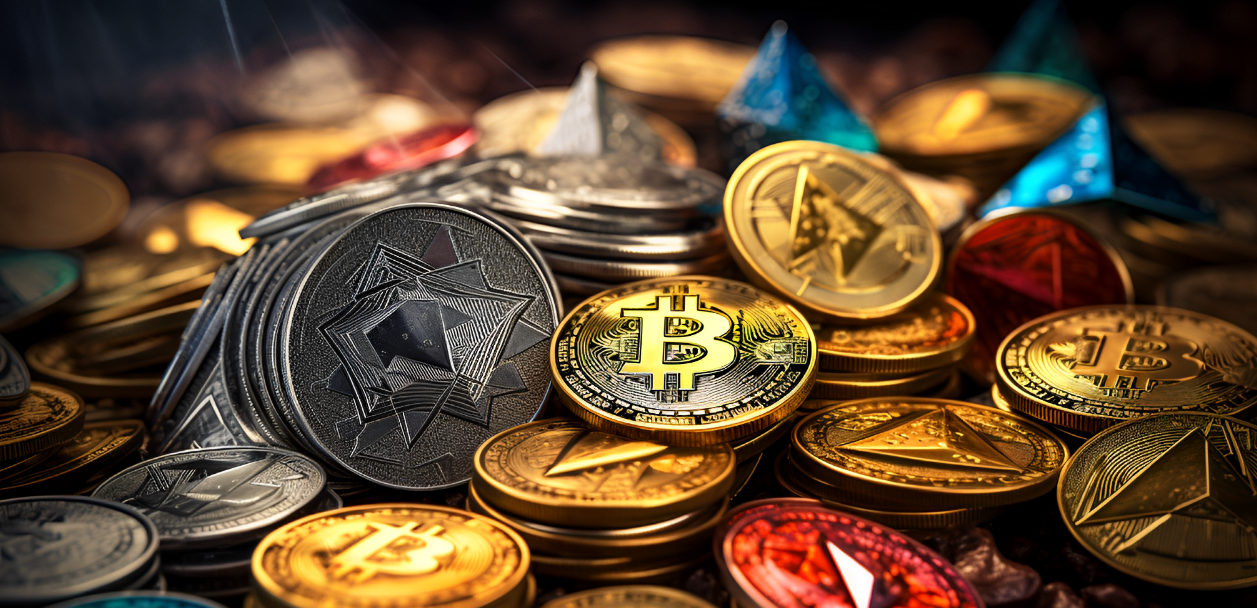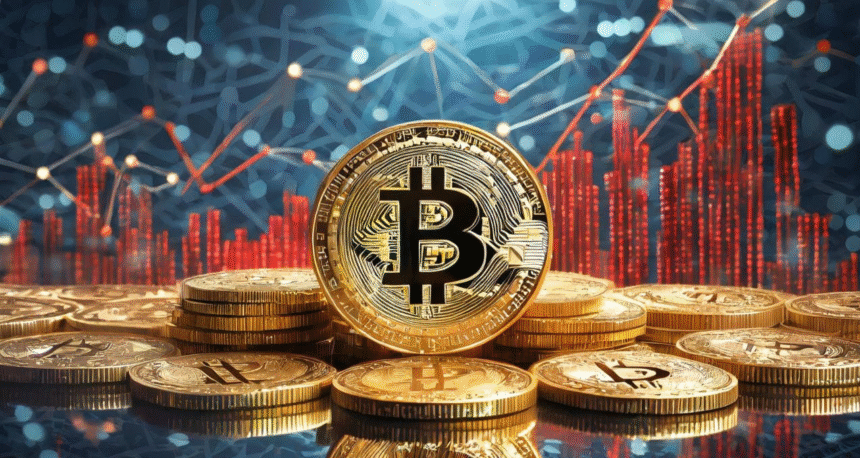The cryptocurrency market continues to evolve rapidly, making it crucial for investors to identify the best altcoins to invest in 2025. With thousands of alternative cryptocurrencies available, selecting the right projects requires careful analysis of technology, market potential, and growth prospects. As we navigate through 2025, certain altcoins stand out as promising investment opportunities that could deliver substantial returns.
The altcoin market has matured significantly, with institutional adoption driving demand for innovative blockchain solutions. Smart investors are looking beyond Bitcoin and Ethereum to discover emerging projects that solve real-world problems while offering attractive investment potential. Understanding which altcoins have the strongest fundamentals, development teams, and market positioning is essential for making informed investment decisions in today’s competitive crypto landscape.
Understanding Altcoin Investment Fundamentals
Before diving into specific recommendations, it’s important to understand what makes an altcoin worth investing in. Alternative cryptocurrencies, or altcoins, represent any digital asset other than Bitcoin. These projects often focus on solving specific problems through innovative blockchain technology, smart contracts, or unique consensus mechanisms.
Successful altcoin investments require thorough research into several key factors. Market capitalization indicates the project’s current value and growth potential, while trading volume reveals investor interest and liquidity. The development team’s experience and track record provide insight into the project’s likelihood of achieving its roadmap goals.
Technology adoption and real-world use cases significantly impact an altcoin’s long-term viability. Projects with active partnerships, growing user bases, and clear utility tend to outperform speculative tokens without practical applications. Additionally, tokenomics structure, including supply mechanics and distribution, affects price dynamics and investment returns.
Top-Tier Altcoins with Proven Track Records
Ethereum (ETH) – The Smart Contract Pioneer
Ethereum remains one of the most compelling altcoins for 2025 investments despite being well-established. The platform’s transition to Ethereum 2.0 has improved scalability and reduced energy consumption, making it more attractive to institutional investors and developers.
The Ethereum ecosystem hosts the majority of decentralized applications (dApps), decentralized finance (DeFi) protocols, and non-fungible token (NFT) marketplaces. This network effect creates strong demand for ETH tokens, which serve as gas fees for transactions and smart contract executions.
Recent upgrades, including the Shanghai upgrade, have improved staking rewards and withdrawal flexibility, making ETH more attractive for long-term holders. The platform’s continued innovation in layer-2 solutions and interoperability positions it well for sustained growth throughout 2025.
Solana (SOL) – High-Performance Blockchain
Solana has emerged as a leading competitor to Ethereum, offering faster transaction speeds and lower fees. The network can process over 65,000 transactions per second, making it ideal for high-frequency applications like gaming, DeFi, and micropayments.
The Solana ecosystem has attracted significant developer activity and institutional investment. Major projects across gaming, NFTs, and DeFi have chosen Solana for its technical capabilities and growing user base. This ecosystem growth drives demand for SOL tokens used for transaction fees and staking.
Despite previous network outages, Solana’s development team has implemented improvements to enhance reliability and performance. The platform’s focus on mobile integration and user-friendly applications positions it to capture mainstream adoption in 2025.
Best Altcoins to Invest in 2025: Emerging Opportunities

Layer-1 Blockchain Solutions
Several newer layer-1 blockchains present compelling investment opportunities for 2025. These projects aim to solve scalability, interoperability, and sustainability challenges that limit existing networks.
Avalanche (AVAX) offers a unique consensus mechanism that enables custom blockchain creation while maintaining interoperability. The platform’s subnet architecture allows enterprises to build tailored solutions while benefiting from the broader Avalanche ecosystem. Strong partnerships with traditional finance institutions and growing DeFi adoption support AVAX’s investment thesis.
Cardano (ADA) continues developing its peer-reviewed blockchain platform with emphasis on sustainability and academic rigor. Recent smart contract functionality has enabled DeFi and NFT applications, though adoption remains slower than competitors. The project’s focus on emerging markets and identity solutions could drive long-term growth.
Polkadot (DOT) enables blockchain interoperability through its parachain architecture. The platform allows different blockchains to communicate and share security, creating a connected ecosystem of specialized networks. As more parachains launch and demonstrate utility, DOT’s value proposition becomes increasingly compelling.
DeFi-Focused Altcoins
Decentralized finance remains a major growth driver for the cryptocurrency industry. Several altcoins specifically designed for DeFi applications offer attractive investment potential.
Chainlink (LINK) provides essential oracle services that connect blockchains with real-world data. As DeFi protocols require reliable price feeds and external information, Chainlink’s network effect strengthens with ecosystem growth. The project’s expansion into Web3 services and enterprise adoption supports long-term value creation.
Aave (AAVE) operates a leading decentralized lending protocol with innovative features like flash loans and credit delegation. The platform’s multi-chain deployment and institutional focus position it to capture growing DeFi demand. AAVE token holders benefit from protocol fees and governance rights.
Compound (COMP) pioneered algorithmic money markets and continues innovating in DeFi lending. The protocol’s integration with various applications and strong security record make it a cornerstone of the DeFi ecosystem. Recent developments in institutional DeFi services could drive increased adoption.
Gaming and Metaverse Altcoins
The convergence of gaming, NFTs, and virtual worlds creates significant opportunities for specialized altcoins. These projects combine entertainment with blockchain technology to create new economic models.

The Sandbox (SAND) has built a popular voxel-based virtual world where users can create, own, and monetize gaming experiences. The platform’s partnerships with major brands and continuous content creation drive demand for SAND tokens used for transactions and governance.
Axie Infinity (AXS) pioneered play-to-earn gaming and maintains a strong position despite market volatility. The game’s evolution toward free-to-play models and improved tokenomics could reignite growth. AXS tokens provide governance rights and staking rewards within the ecosystem.
Immutable X (IMX) focuses on NFT scaling solutions for gaming applications. The platform’s zero gas fees and carbon-neutral approach appeal to environmentally conscious developers and users. Growing partnerships with major gaming studios support IMX’s long-term growth prospects.
Infrastructure and Web3 Altcoins
Projects building essential infrastructure for Web3 adoption represent another category of promising investments. These altcoins enable the decentralized internet’s growth through various technical solutions.
Filecoin (FIL) operates a decentralized storage network that competes with traditional cloud storage providers. As data storage needs grow and privacy concerns increase, Filecoin’s censorship-resistant network becomes more valuable. The project’s integration with NFT platforms and Web3 applications drives FIL demand.
The Graph (GRT) provides indexing and query services for blockchain data, essentially serving as Google for Web3. As the number of DApps and blockchain networks grows, The Graph’s infrastructure becomes increasingly essential. GRT tokens facilitate network operations and provide staking rewards.
Helium (HNT) creates a decentralized wireless network through user-operated hotspots. The project’s expansion into 5G and IoT connectivity could capture significant market share from traditional telecom providers. HNT tokens reward network participants and facilitate data transactions.
Risk Management for Altcoin Investments
Investing in altcoins requires careful risk management due to the sector’s volatility and regulatory uncertainty. Diversification across different project types and market capitalizations helps reduce concentration risk while maintaining growth potential. Position sizing is crucial for altcoin investments.
Allocating smaller amounts to higher-risk, higher-reward projects while maintaining larger positions in established altcoins creates a balanced portfolio. This approach captures upside potential while limiting downside exposure. Regular portfolio rebalancing ensures alignment with changing market conditions and project developments. Some altcoins may experience rapid growth that increases their portfolio weight beyond target allocations, while others may underperform and require reduction or elimination.
Technical Analysis Considerations
Technical analysis provides valuable insights for altcoin investment timing, though fundamental analysis remains primary for long-term holdings. Key indicators include support and resistance levels, trading volume patterns, and trend momentum. Many altcoins exhibit high correlation with Bitcoin and Ethereum, making overall market sentiment important for individual project performance.
However, strong fundamental developments can decouple specific altcoins from broader market movements. On-chain metrics offer additional analysis tools for altcoin investments. Developer activity, network usage, and holder distribution provide insights into project health and growth potential. These metrics often precede price movements and inform investment decisions.
Regulatory Environment Impact
Regulatory developments significantly influence altcoin markets and investment strategies. Clear regulations typically support legitimate projects while eliminating fraudulent schemes, creating a healthier investment environment. Different jurisdictions take varying approaches to cryptocurrency regulation, affecting market access and institutional adoption.
Projects with strong compliance frameworks and legal clarity often outperform those facing regulatory uncertainty. Staying informed about regulatory developments helps investors anticipate market impacts and adjust portfolios accordingly. Legitimate projects with strong use cases generally benefit from increased regulatory clarity and institutional acceptance.
Investment Strategies for 2025
Dollar-cost averaging (DCA) provides an effective approach for altcoin investments, reducing timing risk while building positions over time. This strategy works particularly well for volatile assets like cryptocurrencies. Staking opportunities offered by many altcoins provide additional returns while supporting network security.
Proof-of-stake networks like Ethereum, Cardano, and Solana offer attractive staking yields that compound investment returns. Yield farming and liquidity provision in DeFi protocols can generate additional income from altcoin holdings. However, these strategies involve smart contract risks and impermanent loss that require careful evaluation.
Long-Term Growth Catalysts
Several macro trends support long-term altcoin growth potential. Increasing institutional adoption, mainstream payment integration, and Web3 application development create sustained demand for cryptocurrency assets. Central bank digital currencies (CBDCs) may drive broader cryptocurrency acceptance rather than competition.
Many altcoins offer features and capabilities that complement rather than compete with government digital currencies. Technological improvements in scalability, user experience, and interoperability continue expanding cryptocurrency use cases. Projects that successfully implement these improvements often experience significant value appreciation.
Portfolio Allocation Recommendations
Conservative investors might allocate 5-10% of their cryptocurrency holdings to carefully selected altcoins while maintaining larger positions in Bitcoin and Ethereum. This approach provides altcoin exposure while limiting overall portfolio risk. More aggressive investors could allocate 20-40% to altcoins, focusing on established projects with strong fundamentals and emerging opportunities with high growth potential.
This strategy requires active management and higher risk tolerance. Institutional investors often prefer altcoins with strong compliance frameworks, established partnerships, and clear regulatory status. These projects may offer lower returns but provide greater certainty for fiduciary responsibilities.
Conclusion
The cryptocurrency market in 2025 offers numerous opportunities for investors seeking the best altcoins to invest in 2025. Success requires balancing established projects with proven track records against emerging opportunities with high growth potential. Focus on altcoins with strong fundamentals, active development, and clear use cases rather than speculative tokens without utility. Diversification across different sectors and market capitalizations helps manage risk while capturing various growth opportunities.
Remember that altcoin investing requires ongoing research and portfolio management. Market conditions, technology developments, and regulatory changes continuously reshape the investment landscape. Stay informed, manage risk appropriately, and consider your investment timeline when selecting the best altcoins for your portfolio. Start building your 2025 altcoin portfolio today by researching these promising projects and developing an investment strategy aligned with your risk tolerance and financial goals.







